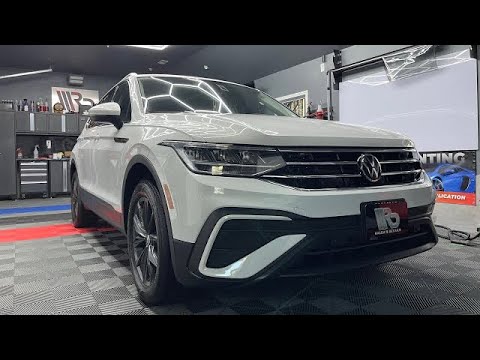Introduction
Automotive detailing goes beyond regular car washing to restore and maintain a vehicle’s appearance to its original showroom shine. It involves thorough cleaning, polishing, and protecting every surface inside and outside the car. One product that has revolutionized the detailing industry is ceramic coating. In this article, we will delve into the role of ceramic coating in automotive detailing, exploring its benefits and how it has become an essential component of the detailing process.
What is Ceramic Coating?
Ceramic coating, also known as nano-ceramic coating, is a liquid polymer applied to a vehicle’s exterior surfaces. It chemically bonds with the factory paint, creating a protective layer that provides long-lasting benefits. The coating’s nanostructure forms a strong bond with the paint molecules, enhancing its durability and protection.
The Significance of Ceramic Coating in Detailing
1. Unmatched Protection
The primary role of ceramic coating in detailing is to provide unmatched protection to a vehicle’s paintwork. It acts as a sacrificial layer, shielding the paint from various external contaminants, such as bird droppings, tree sap, bug stains, road salt, and UV rays. This protection not only preserves the car’s appearance but also extends the longevity of the paint.
2. Enhanced Gloss and Depth
Ceramic coating enhances a vehicle’s gloss and depth, giving it a stunning showroom finish. The coating’s reflective properties intensify the paint’s color and shine, making the car stand out on the road and at automotive events. This visual enhancement is a significant reason why car enthusiasts opt for ceramic coating during the detailing process.
3. Hydrophobic Properties
One of the key benefits of ceramic coating is its hydrophobic properties. The coating creates a water-repellent surface, causing water to bead and roll off effortlessly. This hydrophobic effect not only makes the car easier to clean but also prevents water spots from forming, keeping the vehicle looking immaculate.
4. Effortless Maintenance
Ceramic-coated vehicles require less frequent and easier maintenance. The protective layer resists dirt, grime, and contaminants, making regular washing more effective. Additionally, the coating reduces the need for waxing, as the shine is locked in for an extended period.
5. UV Ray Protection
Prolonged exposure to UV rays can cause paint fading and oxidation, degrading a vehicle’s appearance over time. Ceramic coating acts as a barrier against UV rays, protecting the paint from sun damage and preserving its vibrant color for longer periods.
6. Scratch Resistance
While ceramic coating does not make a car completely scratch-proof, it does add a level of scratch resistance. The coating’s hardness helps to reduce the risk of minor scratches caused by normal wear and tear.
7. Heat Resistance
Ceramic coatings also exhibit heat resistance properties, making them suitable for protecting the vehicle’s paint from the high temperatures generated by the engine and exhaust.
How Ceramic Coating Fits into the Detailing Process
Ceramic coating is typically applied after the vehicle has undergone thorough cleaning, decontamination, and polishing. Here’s how it fits into the detailing process:
1. Preparing the Surface
Before applying ceramic coating, the vehicle’s exterior surfaces must be properly prepared. This includes washing the car, removing any contaminants, and polishing the paint to achieve a smooth surface.
2. Surface Correction
If there are any visible swirl marks, scratches, or imperfections on the paint, surface correction techniques, such as machine polishing, may be used to restore the paint’s clarity and smoothness.
3. Ensuring Proper Bonding
To ensure the ceramic coating adheres properly to the paint, it is crucial to remove all polishing oils and residues. This step ensures the coating bonds effectively with the paint molecules.
4. Applying the Ceramic Coating
Once the surface is ready, the ceramic coating is applied using an applicator pad or microfiber cloth. Technicians work in small sections to ensure even and complete coverage.
5. Curing and Drying
After application, the ceramic coating needs time to cure and dry. This curing process allows the coating to bond fully with the paint and create a durable protective layer.
6. Final Touches
After the coating has cured, technicians may perform final inspections and touch-ups to ensure the vehicle’s exterior is flawlessly protected and polished.
FAQs
Is ceramic coating a substitute for paint protection film (PPF)?
No, ceramic coating and paint protection film serve different purposes. While ceramic coating provides protection against various contaminants and enhances the paint’s appearance, PPF offers physical protection against stone chips, scratches, and other impacts.
Can I apply ceramic coating to my car’s interior surfaces?
Ceramic coating is primarily designed for exterior surfaces. However, some specialized ceramic coatings are available for specific interior surfaces, such as leather and fabric.
How long does ceramic coating last?
The longevity of ceramic coating depends on various factors, including the quality of the coating, maintenance, and environmental conditions. In general, ceramic coating can last from two to five years with proper care.
Can I apply ceramic coating myself?
While DIY ceramic coating kits are available, professional application is recommended for optimal results and to ensure the coating’s proper bonding.
Can ceramic coating be removed?
Yes, ceramic coating can be removed, but the process requires professional polishing and sometimes abrasive techniques. It is essential to have the coating removed by a skilled technician.
Can I wax my car after applying ceramic coating?
Waxing is not necessary after applying ceramic coating, as the coating provides its own protective layer and shine. In fact, waxing may reduce the effectiveness of the ceramic coating.
Conclusion
Ceramic coating plays a crucial role in automotive detailing, offering unmatched protection, enhanced appearance, and hydrophobic properties. As car enthusiasts seek to preserve the beauty of their vehicles, ceramic coating has become an essential component of the detailing process. Whether professionally applied or done as a DIY project, ceramic coating ensures that the vehicle maintains its showroom shine and remains protected from various environmental contaminants for years to come.


